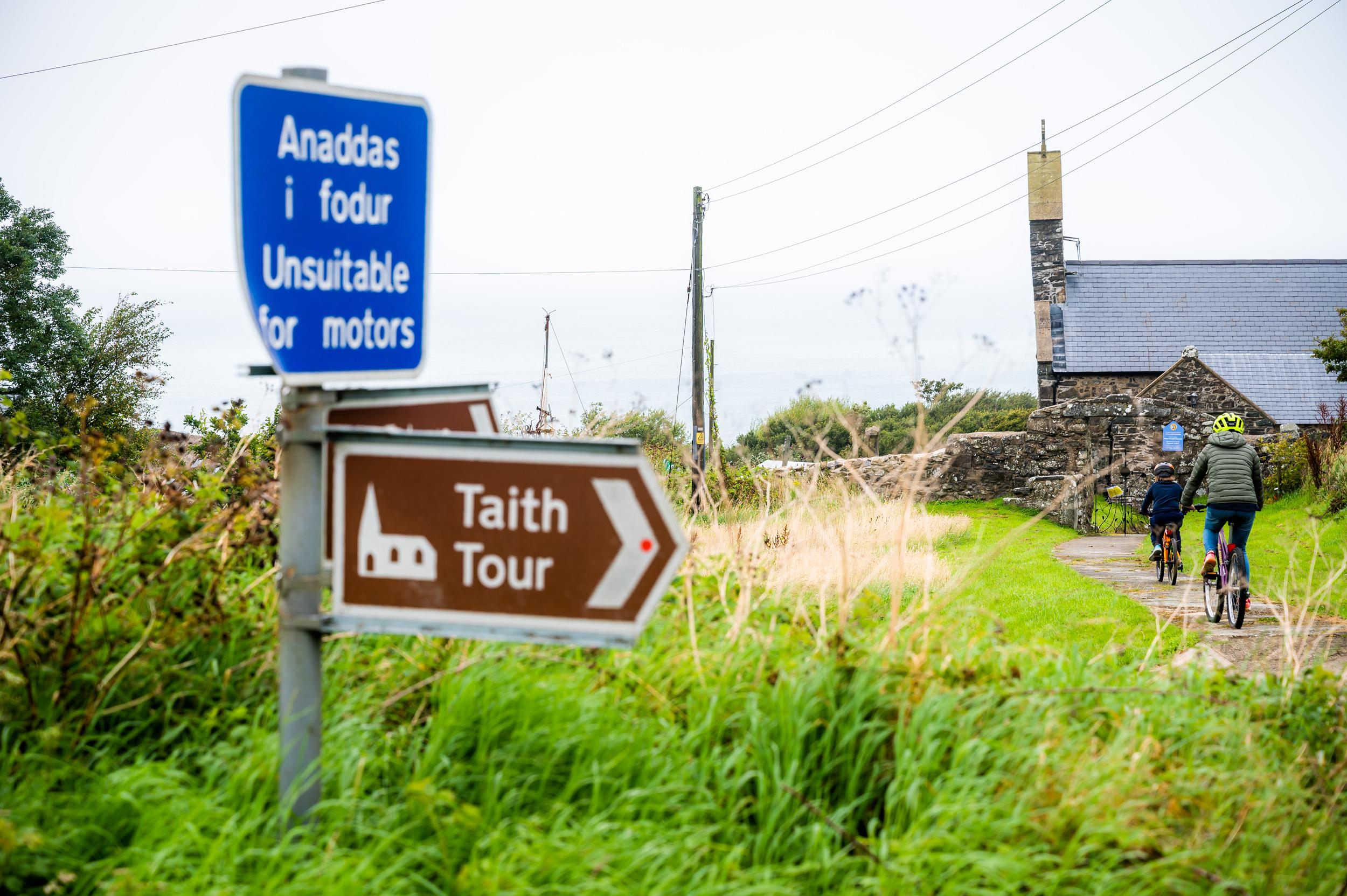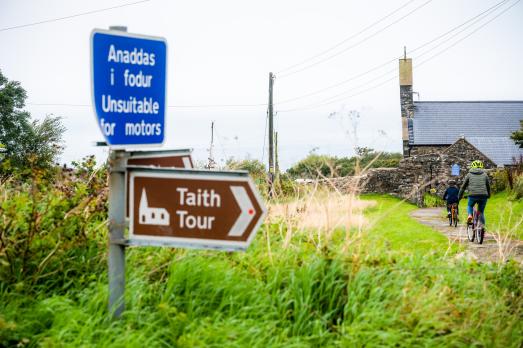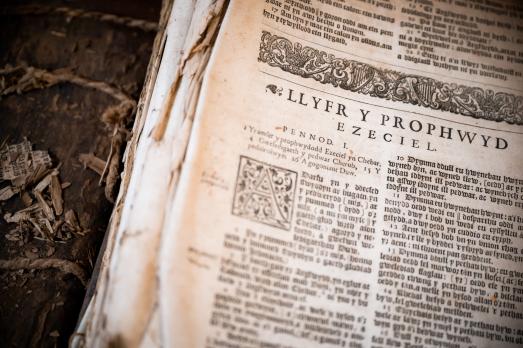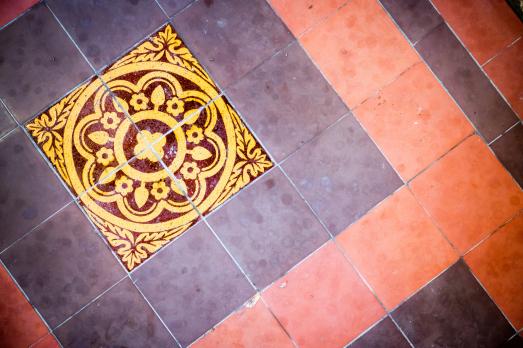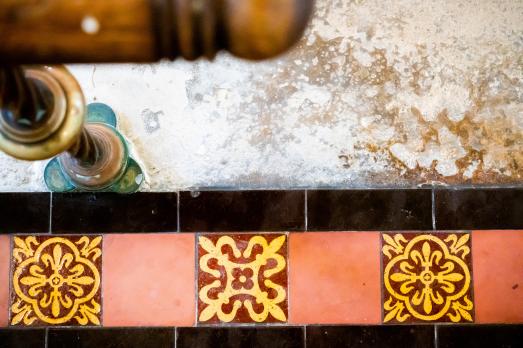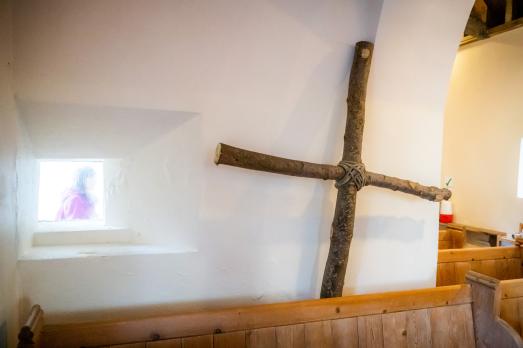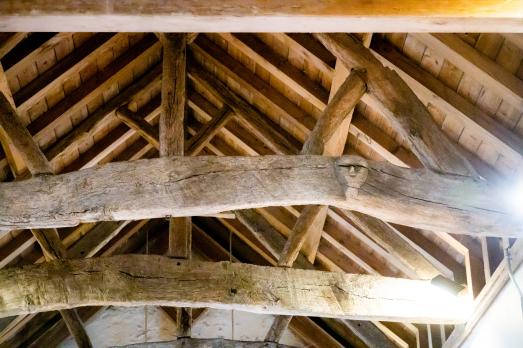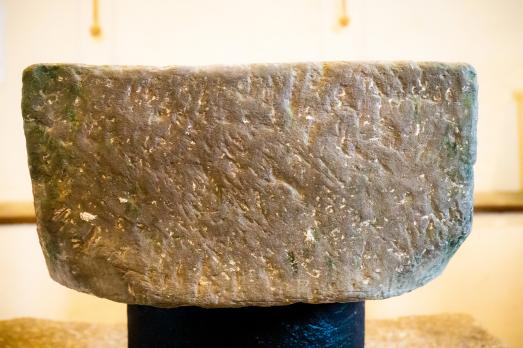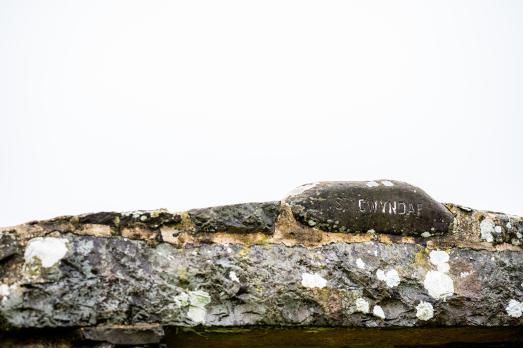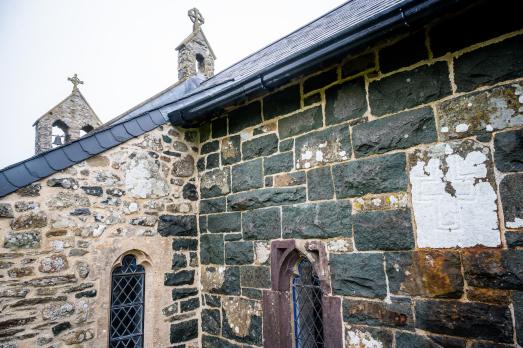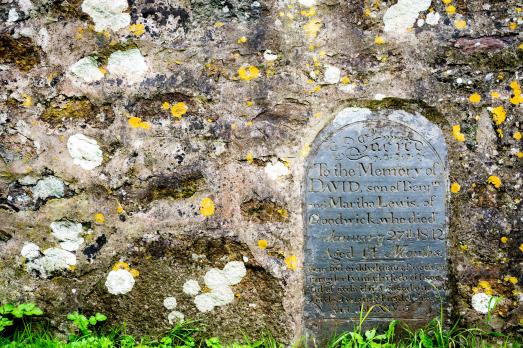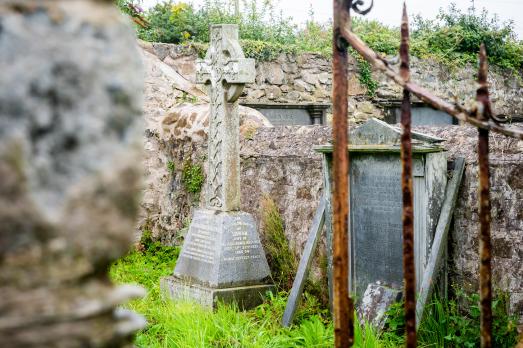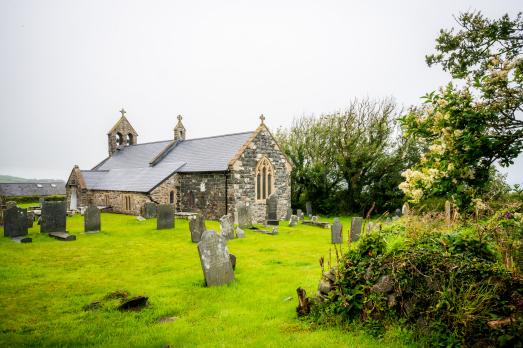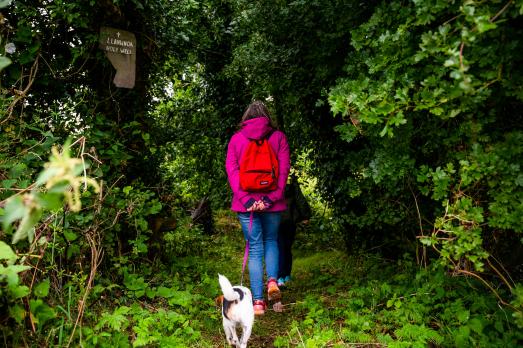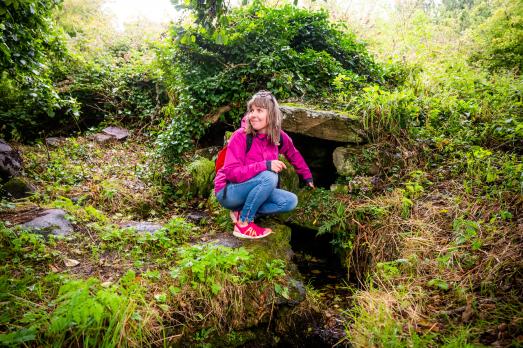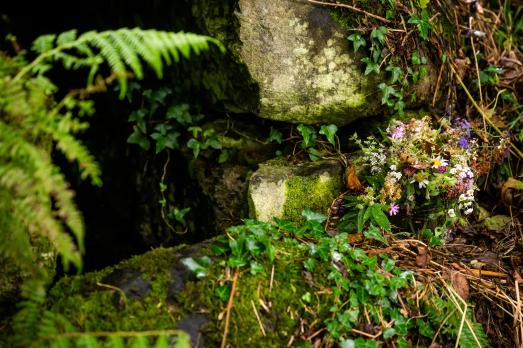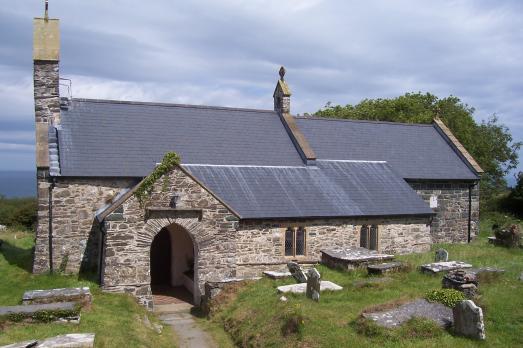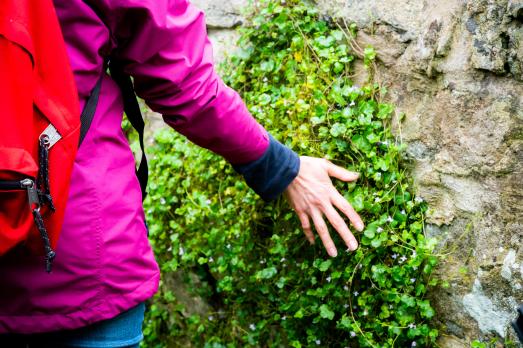Gerald of Wales (1146-1223) held the living here for a while, the church has a lepers squint, no fewer than six 7th-9th century Christian marked stones and lays claim to fame as the church closest to the spot 'where the last invasion of mainland Britain, by a motley force of 1,400 French soldiers, took place on 22nd February 1797. The French were under the command of an American veteran, Colonel William Tate'. It is said that Llanwnda church was sacked during the invasion, but it’s more likely that 'cold, wet and tired French soldiers, having struggled up the cliffs, and unloaded firearms, probably lit a small fire in the church to keep warm during those cold February days. The parish register for 1797 has pages missing: they were probably used by the French as kindling' (Saints & Stones, 2002). The church’s 1620 Parry bible was also damaged, but languished until it was found in the back of the church in the 1980s, when it was restored at Lampeter College in 2017 and returned to the church in a secure cabinet, where it can still be seen today.
The church is dedicated to Saint Gwyndaf (Gwyndaf (Hen) ab Emyr LLadaw brother of Aman Ddu), who is said to have arrived from Brittany which was part of the Roman Empire in the 6th century.
The building you see today dates from the 13th to 15th centuries, with a 12th century font reportedly recovered from a nearby farm in 1880! Notice the corbels, supporting stones, for the rood loft which would have separated the nave from the chancel, and where the priest would have conducted services on special days. The lower door to this was replaced in 2019. The roof at Llanwnda is ancient and medieval; look out for the carved head of a tonsured priest on the tie beam, he is 500 years old, and a unique survival in the region.
After the closure of St Peter’s church in Goodwick in 2017, the memorials from the 1918 and the 1945 wars, together with the Reredos, were transferred to St Gwyndaf’s and subsequently used to build a new vestry in 2019. Can you see the window or ‘squint’ in the porch? This was designed for the sick and lepers to watch the service.
As you walk around the outside you will notice several intriguing marked and carved Celtic stones, built into the walls, reputedly picked up from the land and used in the Victorian refurbishment. One Celtic stone remains in situ in the graveyard. Were these the earliest markers of the first church on this spot? Elsewhere in the churchyard seek out the fascinating enclosed ‘family graves’ with their elaborated carved headstones. What a perfect place to rest in eternity.
And before you go, don’t miss the newly uncovered holy well across the road. Pilgrims on their way to St David’s would have washed their feet here after a long and arduous journey.

